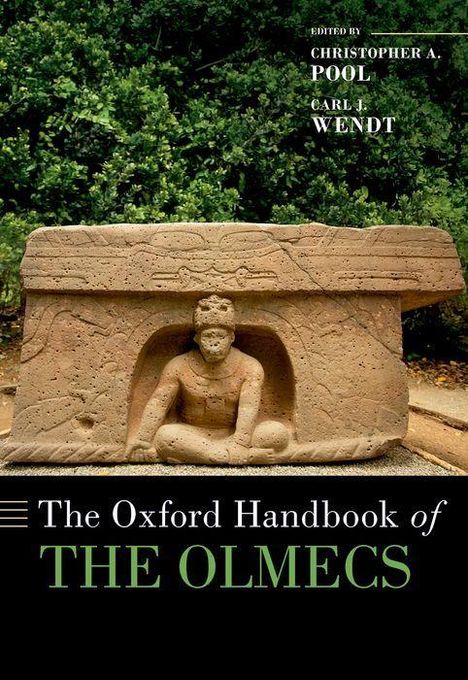The Oxford Handbook of the Olmecs, Gebunden
The Oxford Handbook of the Olmecs
Sie können den Titel schon jetzt bestellen. Versand an Sie erfolgt gleich nach Verfügbarkeit.
- Herausgeber:
- Christopher A Pool, Carl J Wendt
- Verlag:
- Oxford University Press, 12/2025
- Einband:
- Gebunden
- Sprache:
- Englisch
- ISBN-13:
- 9780190900304
- Artikelnummer:
- 12476481
- Umfang:
- 856 Seiten
- Gewicht:
- 1583 g
- Maße:
- 250 x 183 mm
- Stärke:
- 54 mm
- Erscheinungstermin:
- 16.12.2025
- Hinweis
-
Achtung: Artikel ist nicht in deutscher Sprache!
Klappentext
The Oxford Handbook of the Olmecs provides an up-to-date overview of research on this most elaborate of Mesoamerica's foundational cultures (ca. 1450-400 BCE). Few objects of study have sparked more debate in Mesoamerican studies than the role of Olmec culture in the origins of that region's civilizations, with some seeing it as the mother from which all significant cultural developments sprang and others as one of several "sister cultures," each contributing substantially to the emergence of civilization. While acknowledging this debate, this volume moves beyond it with framing articles that discuss the theoretical and social significance of Olmec research, as well as empirical summaries of recent archaeological, art-historical, archaeometric, and environmental research. It also presents topical perspectives on Olmec economy, society, polity, and belief, in addition to forward-looking articles that review the current state and future directions of Olmec research.
Part I introduces the volume with articles on the history of Olmec studies, the theoretical importance of Olmec archaeology, and a review of longstanding debates over Olmec origins. Part II presents recent research on the ecology of the tropical lowland environment and regional settlement pattern studies, while Part III digs deeper into the archaeological record with summaries of recent excavations at key sites in Olman--the "Olmec heartland"-and beyond. Part IV looks beyond the Gulf Coast with up-to-date summaries of the Formative archaeological records in other parts of Mesoamerica, focusing on the local character and social context of participation in interregional networks. Together, Parts II, III, and IV lay the empirical basis for the topical essays that follow in Part V on Olmec subsistence, economy, society, governance, and artistic expression. The volume closes with three comparative articles that reconsider the place of the Olmecs in Mesoamerican studies and anthropological archaeology. The result is one of the most comprehensive and wide-ranging volumes on the Olmec in recent decades.

